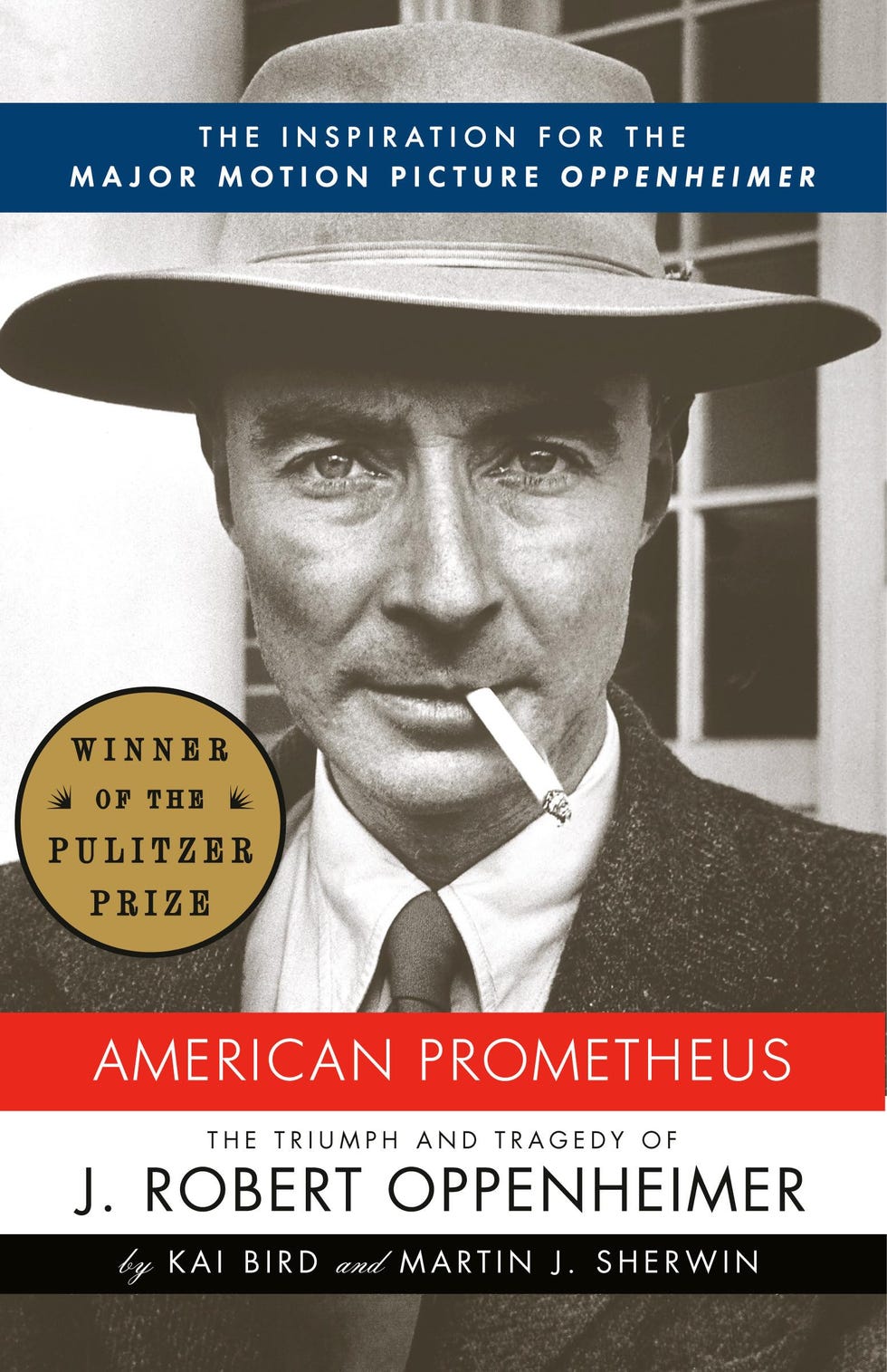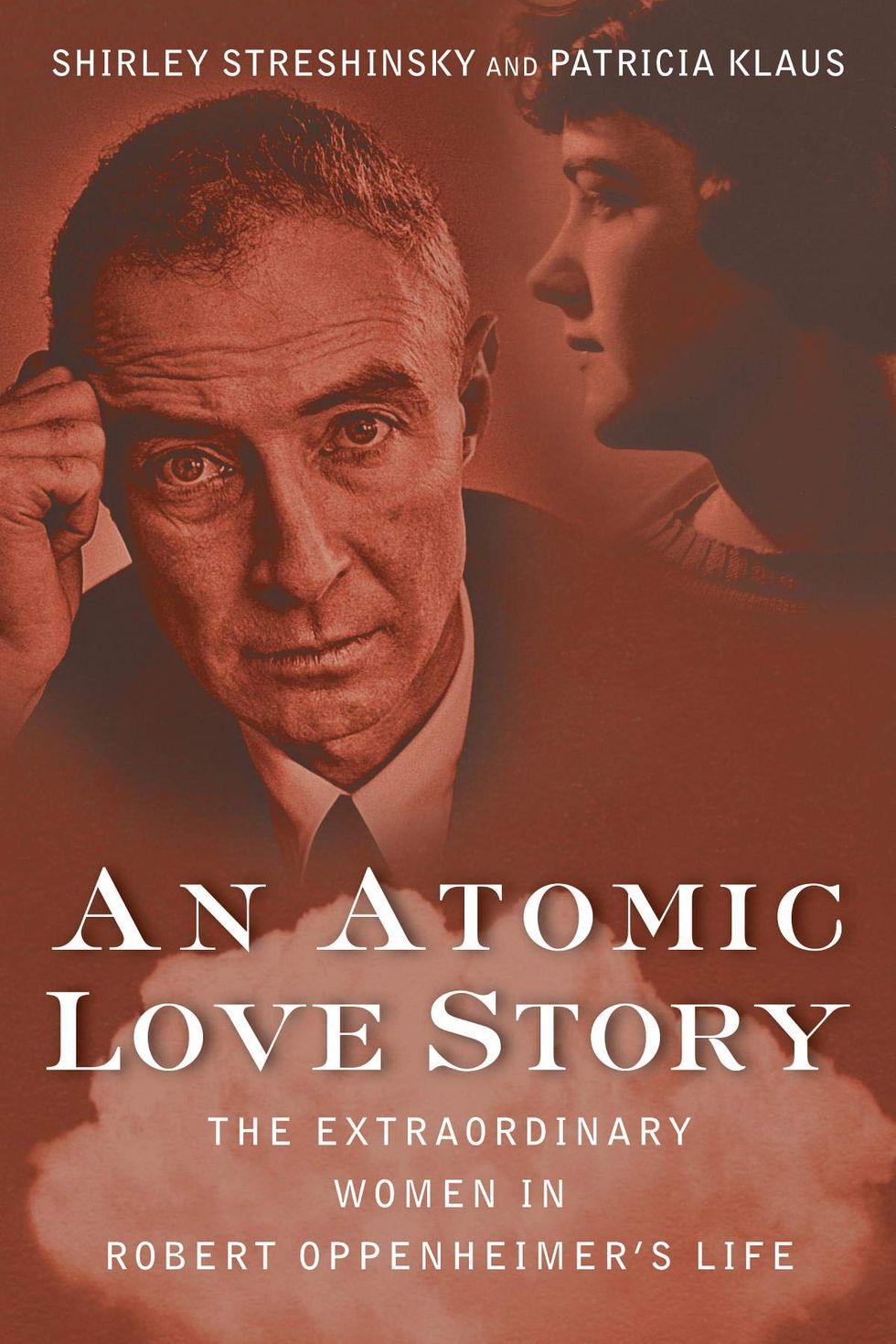Jean Tatlock Had a Profound Effect on J. Robert Oppenheimer’s Life
Before creating a weapon of mass destruction, and before leading the Manhattan Project, J. Robert Oppenheimer’s focus was on a woman named Jean Tatlock. The psychologist met Oppenheimer during their time overlapping at UC Berkeley, and they eventually fell in love and dated for years. Their relationship technically came to an end when he married his wife, Kitty, but Tatlock continued to have an impact on his life long after their split. Her associations with the Communist Party especially would cause him trouble later in his career.
Tatlock’s name is far lesser known than Oppenheimer’s, but she plays an integral part in his story, especially as it’s depicted in Christopher Nolan’s new biopic. Oscar nominee Florence Pugh portrays Tatlock through her romance with the physicist (played by Cillian Murphy), her private mental health struggles, and ultimate demise. Here’s what to know.
She was a trained psychiatrist.
Tatlock’s life and relationship with Oppenheimer are detailed extensively in Kai Bird and Martin J. Sherwin’s American Prometheus: The Triumph and Tragedy of J. Robert Oppenheimer, the source material for Nolan’s film.
She was the daughter of a UC Berkeley Chaucer scholar, Professor John S. P. Tatlock. She grew up in Cambridge (her father taught at Harvard) and then Berkeley. Bird and Sherwin describe her as “free-spirited woman with a hungry, poetic mind”—she used to drive her car with the top down and sing—but she also suffered from depression.
Before going to Vassar College in 1931, Tatlock traveled to Europe and stayed with a family friend in Switzerland who introduced her to psychoanalysis and the work of psychologist Carl Jung, according to Bird and Sherwin. Tatlock left the trip with a deep interest in psychology. She was intelligent, with “a depth that most girls don’t get until after graduation,” a friend said in American Prometheus. She took pre-med courses at Berkeley from 1933-1934 before graduating from Vassar College in 1935.
Bird and Sherwin note the boldness of Tatlock’s medical pursuit, as it was rare for women to become doctors at the time. They wrote:
“Her determination to pursue a career as a psychiatrist surprised some of her friends, who explained it as characteristic of a sometimes bold and impetuous woman. And yet they knew it also made sense. From her politics to her interest in the psychological, Tatlock had always been motivated by the desire to help others in a practical, hard-headed manner.”
By 1943, she was Dr. Jean Tatlock, a psychiatrist working at the Mount Zion Hospital and treating children.
She was Oppenheimer’s “truest love.”
Tatlock met Oppenheimer in the spring of 1936, at a party hosted by his landlady, Mary Ellen Washburn. At the time, she was taking classes at Stanford Medical School (then located in San Francisco) while he was a professor at UC Berkeley. She was 22 years old, a decade younger than him.
Tatlock and Oppenheimer started dating that fall and were together for over three years. “Jean was Robert’s truest love,” a friend recalled in American Prometheus. “He loved her the most. He was devoted to her.” According to Biography, he proposed to her twice, but she turned him down.
Like in Nolan’s Oppenheimer, she wasn’t fond of Oppenheimer’s frequent gift-giving and flowers, according to Bird and Sherwin. It’s less clear if Tatlock made him translate Sanskrit in the bedroom, as depicted in a provocative sex scene in the film. However, it is known that the physicist did study Sanskrit and a number of other languages, as well as the Bhagavad Gita, the Hindu scripture.
Oppenheimer had a reputation as a womanizer, but he was consumed with Tatlock. His collaborator Robert Serber said he’d be “depressed some days” if he was “having trouble with Jean,” according to American Prometheus. Indeed, Tatlock’s impact on Oppenheimer was more than emotional. Patricia Klaus, co-author of An Atomic Love Story: The Extraordinary Women in Robert Oppenheimer’s Life, told Mercury News in 2013 that women like Tatlock, Kitty Oppenheimer, and Oppenheimer’s close friend Ruth Sherman Tolman (also believed to be a lover) “helped create him as a human being of feeling and character.”
Klaus explained, “Robert is often described as brilliant and arrogant, without friends. But in these relationships—especially with Jean and Ruth—there was a depth of affection that helped make him the person he was. They humanized him, in a way that power politics never did.”
She was a member of the Communist Party.
Tatlock paid dues and, in her college years, even reported for the Western Worker, an outlet for the party. She’s said to have opened up Oppenheimer to communism, social causes, left-wing politics, and her friends who shared similar views, according to Bird and Sherwin. Oppenheimer even said in a later interrogation that his “interests began to change” in 1936, alluding to the year he and Tatlock started seeing each other.
She encouraged Oppenheimer to donate to Spanish refugees during the Civil War, an issue she cared about. Per Bird and Sherwin, he intended to donate to medical care rather than weapons. He initially donated through relief groups, but associates he met through Tatlock, convinced him to donate through the Communist Party instead. In the end, he had donated about $1,000—a lot in the ’30s—but stopped in 1942, according to American Prometheus.
She and Oppenheimer continued to see each other after they broke up.
Oppenheimer married Katherine “Kitty” Puening in 1940. But he confirmed in later interrogations that he still saw Tatlock about twice a year from 1939 to 1943, despite his marriage.
During a visit he made to Berkeley in 1943, Oppenheimer was stalked by intelligence agents, who reported their findings to the FBI. They noted that Oppenheimer took Tatlock out to dinner and drinks, she drove him to her apartment, he stayed the night, and he left with her the next morning. After he flew back to New Mexico, he never saw her again. Eleven years later, Oppenheimer would be interrogated by this rendezvous and why Tatlock needed to see him. Like actor Cillian Murphy does in the film, Oppenheimer says it was “because she was still in love with me.”
The government, however, was convinced that it was because of communism, Bird and Sherwin report. They suspected Tatlock of being a spy, and that she knew sensitive information about the Manhattan Project. Or worse, that she was spreading intel to other contacts and ultimately to the Soviet Union. Colonel Boris Pash sought to wiretap her phone, but they didn’t find any firm evidence connecting her to the Soviets.
She questioned her sexuality.
After Tatlock’s death in 1944, letters and accounts from friends were unearthed, revealing that she had relationships with women. During her psychoanalysis she revealed “homosexual tendencies,” according to American Prometheus.
Her friend Mason Roberson said Tatlock confided in him that she was a lesbian, and that she tried to suppress her interest in women by sleeping “with every ‘bull’ she could find,” Bird and Sherwin write. Her longtime friend Edith Arnstein Jenkins also remembered once seeing Tatlock and Mary Ellen Washburn in bed together, smoking and reading newspapers, one morning, perhaps hinting at a romance. Bird and Sherwin report that Jean asked Washburn to come over the night she died, saying she needed her and was feeling very depressed, Washburn she wasn’t able to make it. She felt guilty about it afterwards.
The book Atomic Love also touches on Tatlock’s relationship with writer and poet May Sarton, a friend since childhood. Per Today, Tatlock once wrote to Sarton, “Last year there was a period where I thought I was a homosexual,” but she later clarified, “I don’t love you that way.”
She died in 1944 by suicide.
A coroner ruled that Tatlock died on January 4, 1944, by suicide. Her motive was unknown at the time. Her childhood friend didn’t believe that it was a “personal heartbreak” (Oppenheimer’s rejection) that led to her death. Historians remain conflicted on the true cause of her death.
Her father found in her apartment, her body on a pile of pillows next to the tub and her head submerged in the partially filled tub. She had left a suicide note that began, “I am disgusted with everything…” The news came as a surprise to her colleagues at the hospital, who believed she was an “outstanding success,” according to American Prometheus. In the book, Serber recalled that Oppenheimer “was deeply grieved” when he learned of Tatlock’s passing.
Bird and Sherwin wrote:
“The taking of one’s own life invariably becomes an imponderable mystery to the living. For Oppenheimer, Jean Tatlock’s suicide was a profound loss. He had invested much of himself in this young woman. He had wanted to marry her, and even after his marriage to Kitty, he had remained a loyal friend to her in need—and an occasional lover. He had spent many hours walking and talking her out of her depressions. And now she was gone. He had failed.”
There are conspiracy theories that Col. Boris Pash was responsible or involved with Tatlock’s death—given the wiretapping and his history of orchestrating other kidnappings—but American Prometheus notes he was already transferred to London by the time of her death.
Oppenheimer was interrogated about her.
In 1954, during security hearings with the United States Atomic Energy Commission, Oppenheimer was scrutinized for his Communist associations, and was ultimately denied his security clearance.
The examination pried into his relationship with Jean Tatlock. During questioning, Oppenheimer estimated that he had seen her 10 times in the five years between 1939 and 1944. “We had been very much involved with one another and there was still very deep feeling when we saw each other,” he said of their meetings, per American Prometheus. Such meetings took place at her home, at the hospital where she worked, drinks at the Top of the Mark, and at his home in Berkeley, which is near her father’s house.
Oppenheimer added that Tatlock had wanted to see him because he didn’t say goodbye before leaving for Los Alamos, the secret bomb testing site where he worked. “I felt she had to see me. She was undergoing psychiatric treatment,” he said in the interrogation, according to Bird and Sherwin. “She was extremely unhappy.”
Erica Gonzales is the Senior Culture Editor at ELLE.com, where she oversees coverage on TV, movies, music, books, and more. She was previously an editor at HarpersBAZAAR.com. There is a 75 percent chance she’s listening to Lorde right now.




